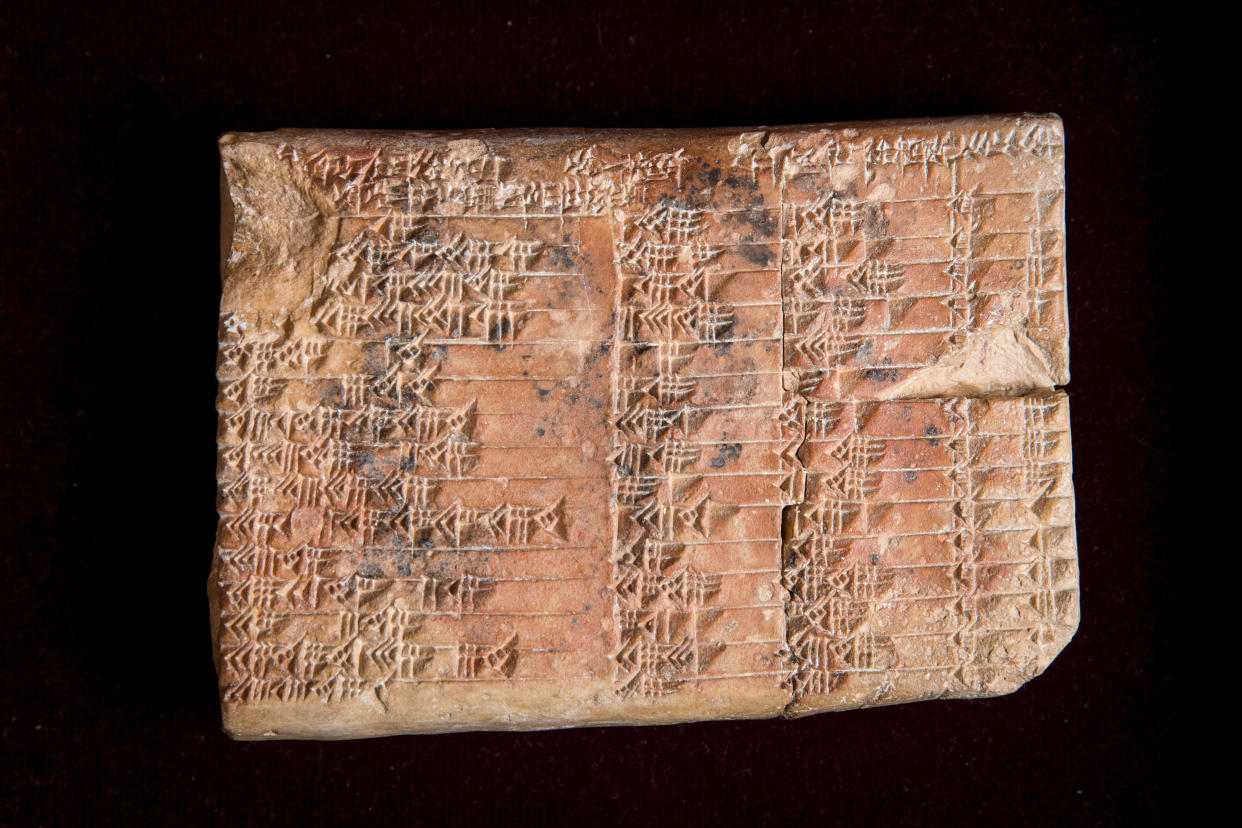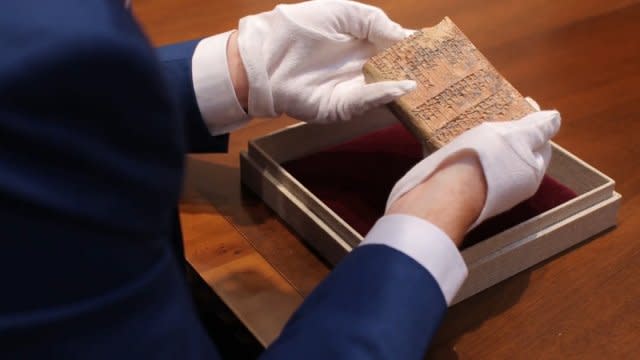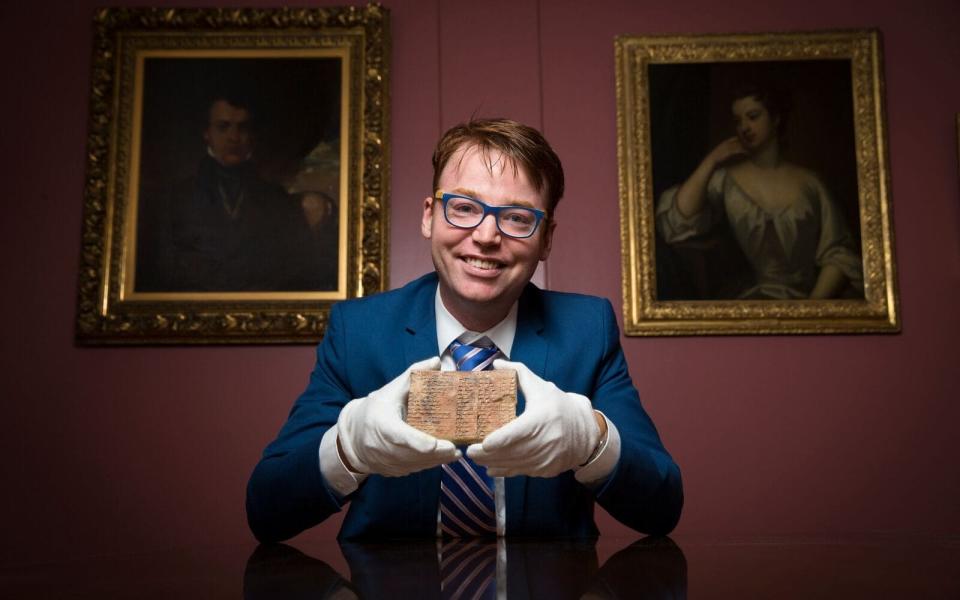Ancient stone tablet ‘proves Ancient Greeks didn’t invent trigonometry’

Generations of schoolchildren have learned that Ancient Greek thinkers invented trigonometry – but rows of numbers deciphered on an ancient stone tablet have turned that idea upside down.
In fact, ancient Babylonians beat the Greeks to trigonometry, the branch of mathematics that focuses on the properties of triangles, by more than 1,000 years.
The evidence is inscribed on a 3,700-year-old clay tablet known as Plimpton 322 – which was found by an archaeologist and antiques dealer who is said to have inspired Indiana Jones.
MOST POPULAR STORIES FROM YAHOO UK
Kim Jong-Un ‘killed his uncle after he tried to stage a coup with China’
Hospital staff ‘fed vulnerable patients pills hidden in ice cream and meals’
Royal Mail threatens grieving postman’s daughter for not returning his uniform 24 hours after he died
Grieving husband calls for change in the law after cyclist is cleared of manslaughter
Grenfell Tower victims have accepted just nine offers of permanent accommodation
One in three Brits ‘would consider a sexual encounter with a robot’
The Babylonian relic was discovered in the early 1900s in what is now southern Iraq by American diplomat, archaeologist and antiquities dealer Edgar Banks.

For decades mathematicians have puzzled over the four columns and 15 rows of numbers written on the tablet in cuneiform script.

Now the mystery has been solved by scientists who claim the tablet displays a trigonometric table that is both the world’s oldest and most accurate, due to the unique Babylonian approach to arithmetic and geometry.
Dr Daniel Mansfield, from the School of Mathematics and Statistics at the University of South Wales in Australia, said: ‘Our research reveals that Plimpton 322 describes the shapes of right-angle triangles using a novel kind of trigonometry based on ratios, not angles and circles.
‘It is a fascinating mathematical work that demonstrates undoubted genius.’

 Yahoo News
Yahoo News 

